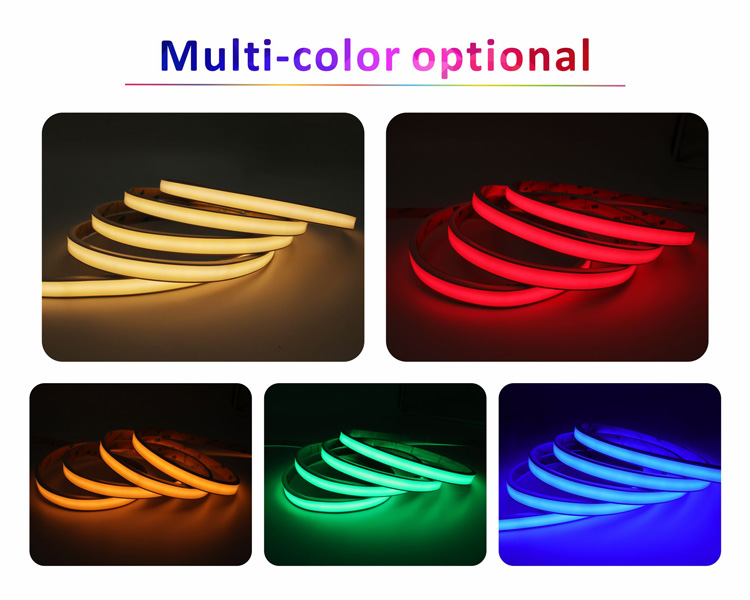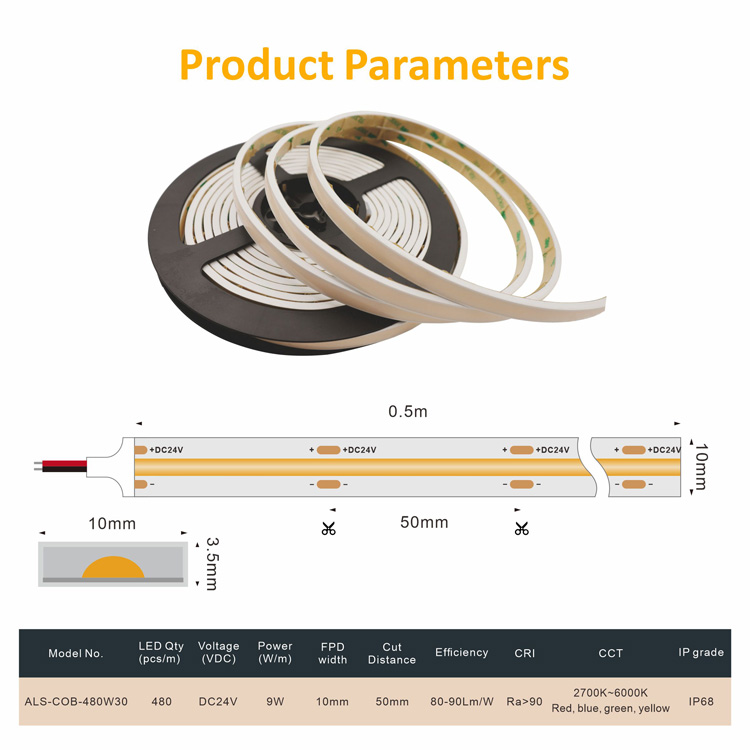-
Products Center
- Module LED Flood Lights
- 100 Series Module LED Flood Lights
- 300 Series Module LED Flood Lights
- 400 Series Module LED Flood Lights
- 600 Series Module LED Flood Lights
- 700 Series Module LED Flood Lights
- 800 Series Module LED Flood Lights
- Cast Aluminum LED Flood Lights
- 100 Series Cast aluminum LED Flood Lights
- 200 Series Cast aluminum LED Flood Lights
- 400 Series Cast aluminum LED Flood Lights
- Street LED Lights
- 100 Series COB LED Street Lights
- 200 Series SMD LED Street Lights
- 300 Series COB LED Street Lights
- 400 Series SMD LED Street Lights
- Application Area
- Certificate Center
- Technical Support
- Contact US

How to Choose A Good LED Light Strip? LED Light Strip Buying Guide
- date: 2023-12-01
- category: Industry knowledge
- click:
LED linear strip lighting has become extremely popular, whether your lighting needs are commercial or residential lighting applications, the impressive variety and versatility of LED strips are sure to meet your design requirements and technical specifications. Some of the most popular types of LED light strips include color-changing and waterproof types, which can be purchased in solid white or warm white, or in the RGB spectrum for more colorful effects.
Purchasing an LED light strip may seem relatively simple, but there are many factors you need to consider. This guide will introduce the LED light strip categories, some typical uses for LED light strips in different voltage options, and introduce some of the products in the Aglare LED lighting range. Click one of the links below to jump to this section:
1.Types of LED strips lights
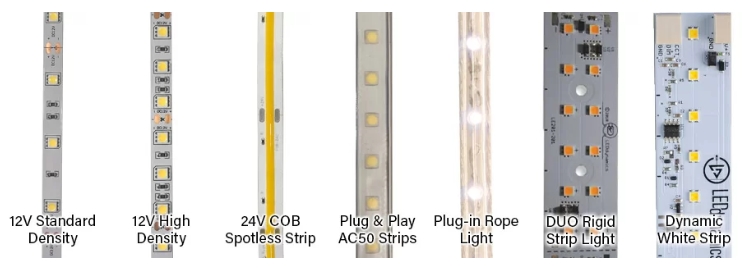
The LED Strips category is a broad category that includes all different types of LED strip lights.Depending on how you plan to use the LED strips, you may need one type over the other. For example, IP65 LED flex strips feature a covering that makes them waterproof, they are more appropriate for outdoor and damp environments. Each type of LED strip light is described briefly below;this guide will go into more detail on them later as there are multiple strip options in most of these categories.
DC LED Flexible Strip Lights – Strips that run straight from a low DC voltage, typically 12-24V. These flexible strip lights have an adhesive backing for easy mounting and can be cut every two inches. They are offered in a wide range of light outputs and waterproof protection.
AC Plug & Play LED Strip Lights – Flexible strip lights that run straight from your outlet. Just plugin and they are ready to go. These strips can run in much longer straight-run lengths than DC Flex Strips…all the way up to 150 FT!
LED Rope Light – Encased, Omni-directional LEDs in the standard rope light packaging – very dim output meant for accent lighting, also plug & play!
2.LED Strip Voltage Options
5v LED strips
The 5v voltage of these lights makes them perfect for decorating and achieving dynamic lighting in internal areas. A benefit of using 5v voltage is that it is a safer option. Not only does 5v reduce risk of electric shock, but low voltage lights also make use of a transformer unit rather than a main power supply, so can be used in gardens, boats and caravans. One disadvantage of 5v voltage is that contrary to popular belief, you are not actually guaranteed to save energy costs. However, a dimmer can help cut back costs slightly.
12v LED strips
Typical applications of 12v lights include kitchens, bedrooms and driveways since they can be used both internally and externally. Although, note that you should always invest in appropriate weather protection and fixings when installing LED lights outdoors.
A major advantage of using a 12v strip is its reliability. This voltage option is much more cost-effective, and uses 20% less energy to emit the same light as an incandescent bulb. However, compared to 5v strips, this option requires more careful planning of wiring and transformer sizing during installation.
A 24v LED strip offers a great deal of versatility and is particularly beneficial for decorative or discreet lighting. Long lengths of 24v LED strips can also be comfortably powered from one end without running the risk of voltage drop.
3.LEDs/length
When buying LED strip lights, it is important to look at the number of LEDs per length. For brighter output and higher light quality, you should look for the strip lights that have the highest number of LEDs per Foot (Meter, Yard, etc). If LEDs are spaced too far apart across the strips they could produce spotty lighting instead of a clean, constant line of light. It can be confusing as manufacturers use different units of measurement to advertise this. My recommendation would be to stick to a certain measurement and then convert all other measurements to see what strips have the most LEDs per set unit of measurement.
4.LED Strip Colors
Our LED strip lights come in a wide range of single colors as well as multi-color strips (RGB or RGBW). The most basic LED strip lights are our single colors that only emit one fixed light color. We offer them in: Warm White, Neutral White, Cool White, Red, Green, Blue, Yellow, Pink, and Ultra Violet (UV).
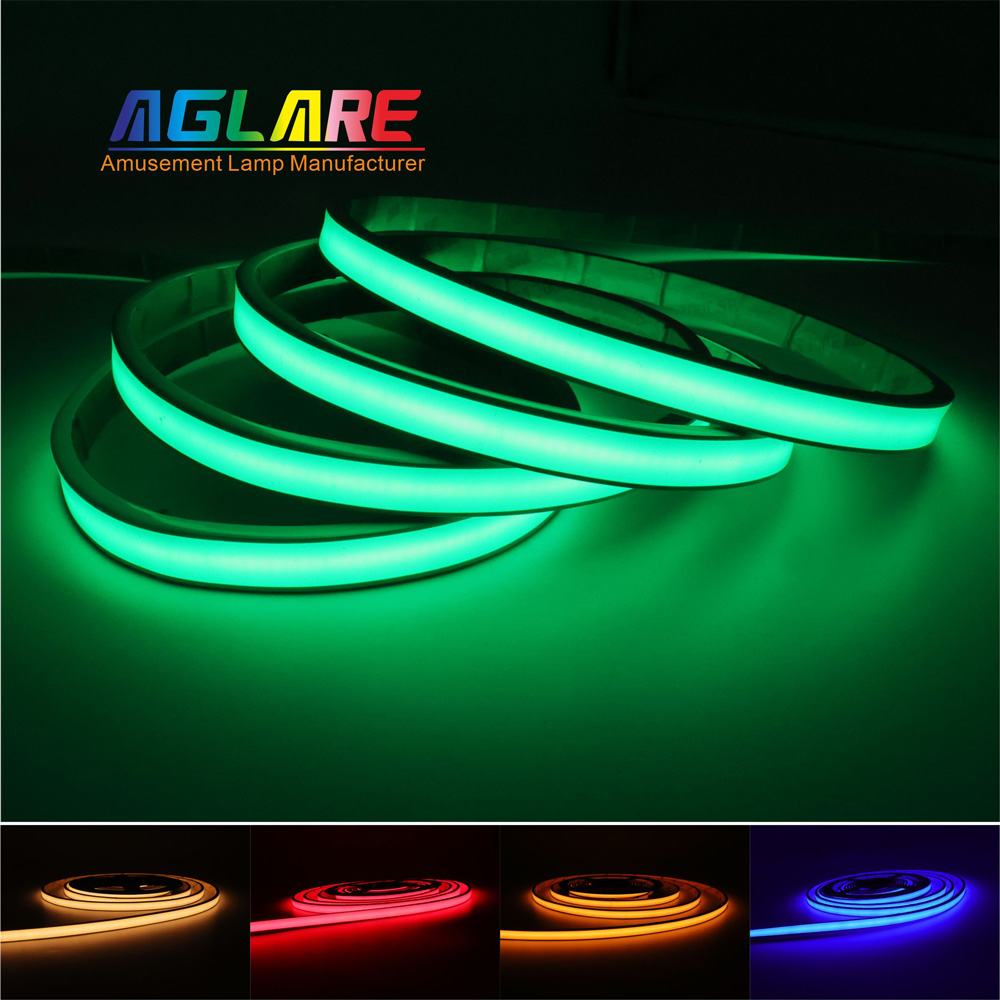
The color-changing strips are called RGB strips. These LED lights can display any Red-Green-Blue The color-changing strips use multi-colored LEDs so that they can change colors to your liking. RGB Strip lights are the most common color-changing lighting we carry. These LED lights can display any Red-Green-Blue combination color.
The one color RGB lights can’t create is white. That is where RGBW strip lights come into play. The LEDs on the strip alternate between RGB and White diodes so that the light can produce multi-color effects but also a normal white for when you need it.
5.Installation of LED Strip Lights
When buying light strips for an application you should always have an idea of how you will mount them and set them up. For some strips like the DC LED Flex Strips, it is as easy as exposing the adhesive backing and sticking them onto a clean surface. Other installations can be much more difficult for mounting, cutting, and wiring strips together.
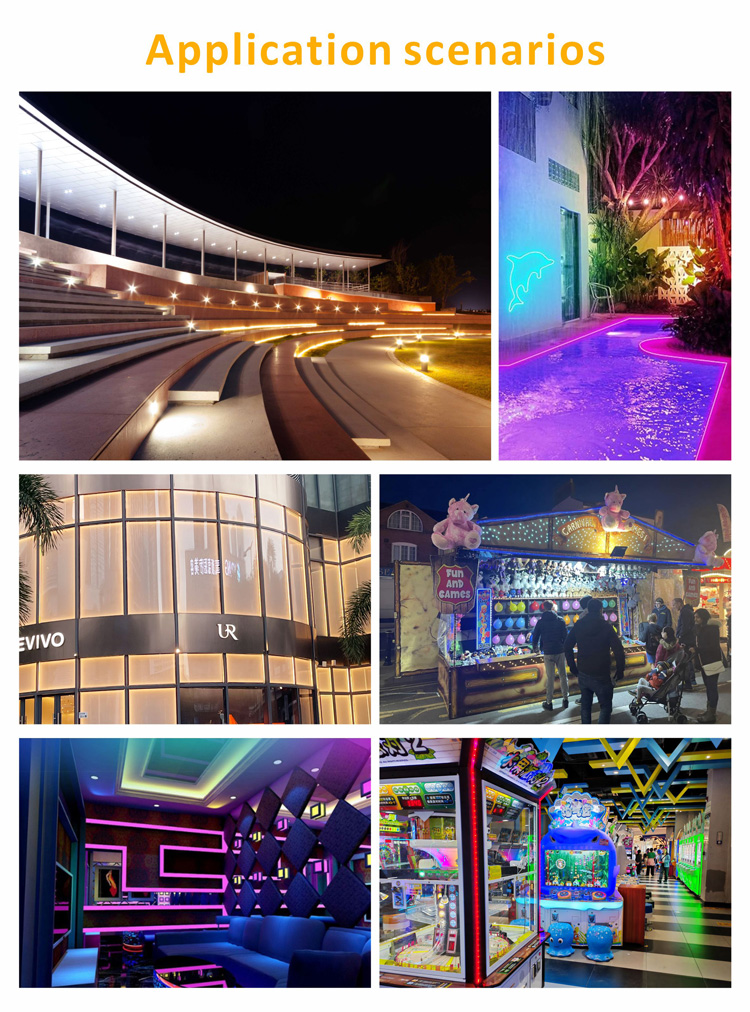
Frequently asked questions
How far can you install an LED strip from its power supply?
You can install a 5v or 12v LED strip up to five meters from its power supply from one end—any more will cause a voltage drop. With 24v strips, these can be powered up to 10 metres from the power supply from one end.
What does LED density on an LED strip mean?
LED density means the total population of LED lights on a metre reel. In the COB LED Strip Lights 480LEDs/m DC24V Input
What LED strip light colour temperature should I choose?
Color temperature is how we differentiate the various white colors that an LED can produce. Temperature indicates how ‘warm’ or ‘cool’ the light appears. Temperature is measured in Kelvin with higher temps representing cool colors (blueish hue) and lower temps representing warmer colors (yellowish light you would expect from a bulb).
Tunable white lighting is becoming a very popular trend in lighting. This type of strip will offer multiple CCT colors on one strip and require a special controller much like RGB lighting. Instead of making vibrant colors across the rainbow, tunable white lighting can transform the feel of your room from a 2700K Warm White all the way up to a 6500K Cool White. We go over our tunable white lighting options in-depth in our Tunable Lighting Guide.
2700-3300k: a warm white which is perfect for bedrooms to achieve a cosy atmosphere.
4000k: an ideal balance for retail store decoration.
6000-6500k: a pure white which is desirable for creating natural-looking fake sunlight.

